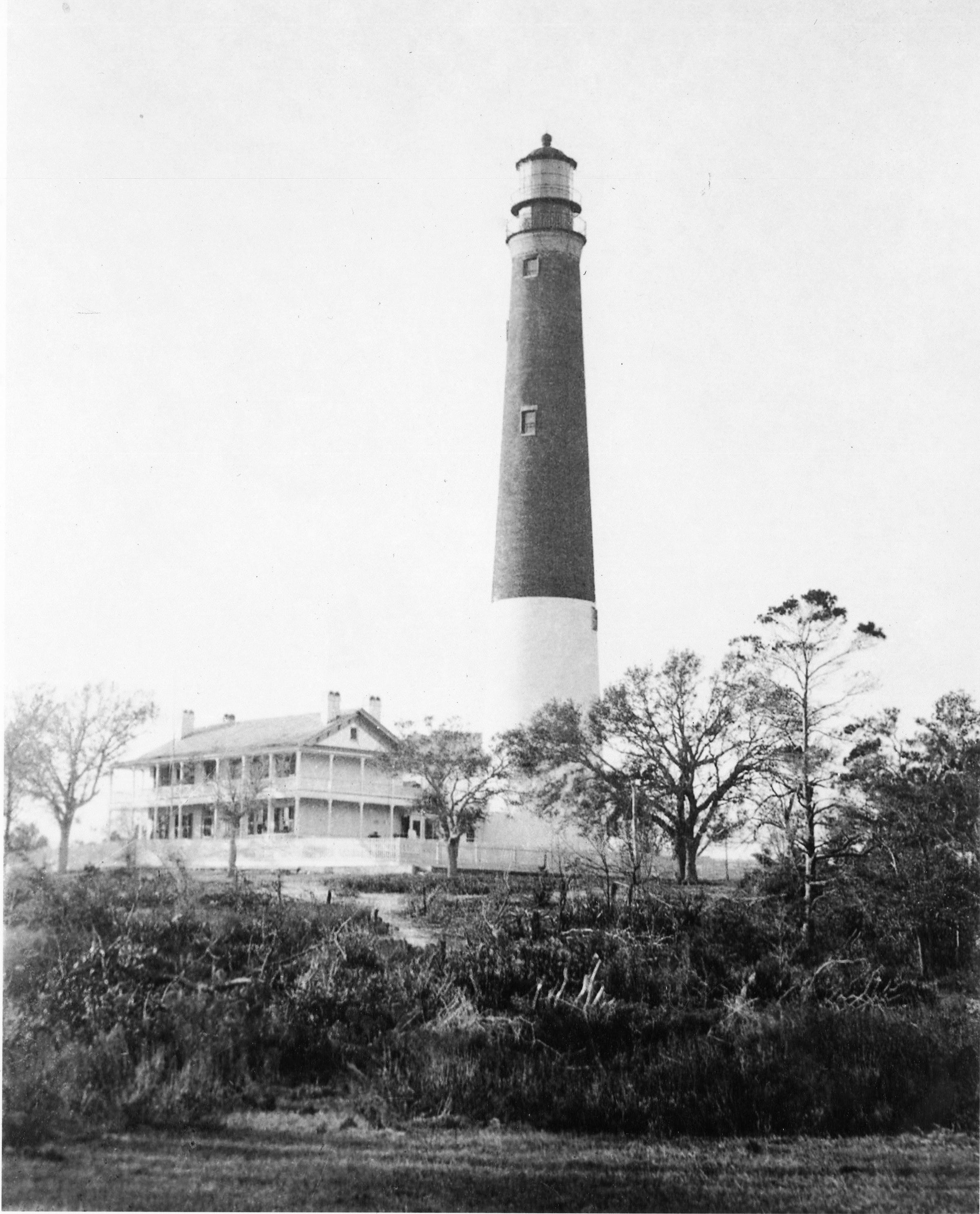
As a natural seaport, Pensacola was used as a trading place almost from the date of her early visiting explorers. The bay, huge as it remains, has a narrow entrance, and as such, it requires caution for arriving vessels, especially once darkness has fallen. Trade by sea — in and out — has been a factor from early Spanish times, and surely when British ruled here. Trade — and organization — suggest that almost from the first those involved used protective devices to guide arriving ships, and in doing so they employed concepts that had been employed for such protection back more than 1,500 years! Initially, a vessel's leaders were guided by what may best be called bonfires, light kept burning for harbor entries throughout the night when ships were anticipated. Protection was improved with the passage of time and the use of new and better ideas. This was the background of the formation of the U.S. Lighthouse Bureau, one of the nation's first governmental agencies. The bureau was formed in 1789.
100 years ago: Rewinding a century, what was Pensacola like in the 1920s?
Pensacola waterfront: As Pensacola plans future of its waterfront, here's a glimpse of its past
Little is known of what Spanish and British authorities provided as a safety light. However, in 1821, as Pensacola became part of the United States, such a service was begun immediately. The first effort was torch-like lights affixed to a staff or pole. However, this was found to be ineffective. Next, officials gained use of what was termed a light ship, the Aurora Borealis, which had earlier been used as a safety beacon for the port of New Orleans. Brought to Pensacola, the operators discovered that tides kept moving the vessel to the east, out of vision for those aboard incoming vessels.
In 1821, Congress approved $6,000 for initial funding for a true lighthouse for Pensacola. Assigned was Winslow Lewis, who was deemed a professional lighthouse builder. His work began that year, and by December 1824, the Pensacola light was in use. It was circular, built of brick and stood 40 feet tall (not counting the above sea level land on which it stood). The beam was fitted with 10 whale oil lamps, backed by a silver plated reflector. A clock-like mechanism rotated the beam, which marines declared could be seen 20 miles as sea. A lighthouse keeper's cottage was added, and this was occupied (and the light tended) by a succession of men, most of whom were accompanied by their wives.
The lighthouse worked, and in the years that followed, funding was provided for improvements and for other surface guides placed inside the bay. Through the Mexican War, the light stood, improved with requirements for the Navy yard and its vessels. Then in 1859, work began on a new facility. The brick tower was 30 feet in diameter at the base, sloped, 151 feet tall, with a new generation of lighting equipment called the Fresnel system. The light included 344 hand-cut prisms, which together focused light into eight powerful bull's eye beams. The lens itself was 10 feet tall and 8 feet in diameter. As with the original light, the second unit's beacon was visible from more than 20 miles as sea.
Through the Civil War, some damage was suffered by the tower but beyond, for well over a century, the light remained, was improved several times and ultimately was placed under the supervision of the U.S. Coast Guard. For over a century, the facility's keepers were in charge. Step by step, such niceties as electricity, a telephone and product delivery service came to be. In 1965, the facility was fully automated, and the presence of members and volunteer associations became a critical part of upkeep. Present services are related to aiding pleasure crafts and safety procedures, noted in the presence of naval aircraft. Annually, many thousands of visitors tour the facility, with some venturesome young people still climbing to the inner heights. Guides sometimes retell stories of how local light all began.
Was the port's first protective light a manned bonfire? Or were there other devices suggested? Either way, Pensacola can point to 1821 as the date of actual use here, with the Light House Bureau's effort acknowledged.
John Appleyard is a Pensacola historian and writes a weekly historical column in the Pensacola News Journal. His 15-minute films about Pensacola are viewable, without charge, from 10 a.m. to 4:30 p.m. Tuesday through Saturday in The Cottage, 213 E. Zaragoza St.
"light" - Google News
August 23, 2020 at 07:11PM
https://ift.tt/3l4uLT8
Shining a light on the history of Pensacola's lighthouse | John Appleyard - Pensacola News Journal
"light" - Google News
https://ift.tt/2Wm8QLw
https://ift.tt/2Stbv5k
Bagikan Berita Ini














0 Response to "Shining a light on the history of Pensacola's lighthouse | John Appleyard - Pensacola News Journal"
Post a Comment